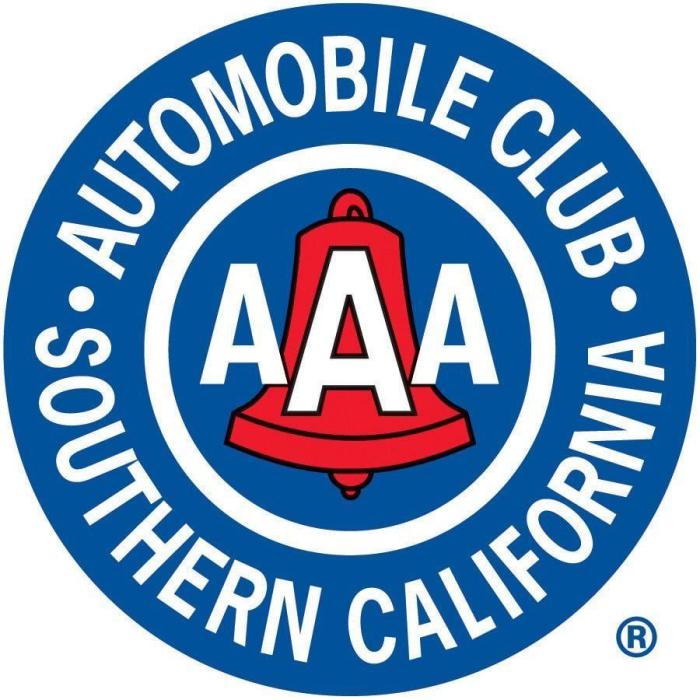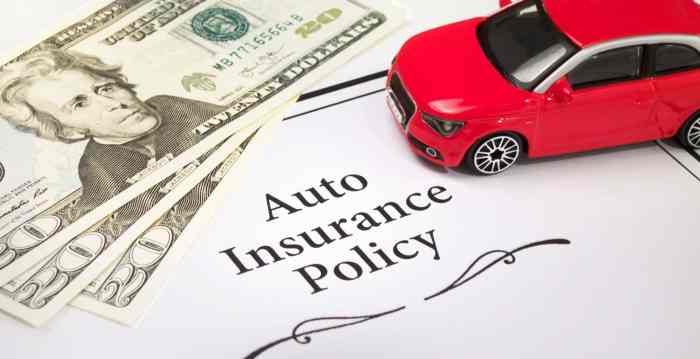Navigating the world of car insurance can feel like driving through a dense fog. Traditional insurance policies often focus solely on liability and collision coverage, leaving drivers vulnerable to unexpected roadside emergencies and lacking access to potentially valuable membership benefits. This guide illuminates the unique advantages of auto club insurance, exploring how it complements or even surpasses standard car insurance by offering a wider range of services and financial benefits. We’ll delve into the core features, compare it to traditional plans, and ultimately help you determine if auto club insurance is the right fit for your needs.
We’ll examine the comprehensive coverage options, membership perks beyond insurance, the target audience, the claims process, and a look at the competitive landscape. By the end, you’ll possess a clear understanding of how auto club insurance functions, its benefits, and whether it can provide the protection and value you seek.
Defining Auto Club Insurance

Auto club insurance, often offered by organizations like AAA, provides a range of automotive-related services beyond the typical coverage found in standard car insurance policies. While it shares some similarities with traditional insurance, it also offers unique benefits and often operates under a different pricing model. Understanding these differences is crucial for choosing the right coverage for your needs.
Auto club insurance typically bundles together roadside assistance, emergency services, and sometimes even travel assistance with more traditional insurance coverage options. This integrated approach distinguishes it from standard car insurance, which primarily focuses on liability and collision protection.
Core Features of Auto Club Insurance
Auto club insurance policies typically include a comprehensive suite of services designed to handle various automotive emergencies and needs. These services go beyond the basic coverage of a standard car insurance policy. Key features frequently include roadside assistance (towing, flat tire changes, jump starts), emergency services (lockout assistance, fuel delivery), and travel assistance (trip planning, travel discounts, and even emergency accommodations). Some providers also offer insurance coverage for collision, liability, and comprehensive needs.
Comparison with Standard Car Insurance
Standard car insurance primarily focuses on financial protection in the event of an accident or damage to your vehicle. It covers liability (damage you cause to others), collision (damage to your vehicle from an accident), and comprehensive (damage from non-collision events like theft or hail). Auto club insurance often incorporates these elements but expands the scope to include a broader range of non-insurance services that address immediate roadside needs and travel assistance. Standard car insurance usually lacks the integrated roadside assistance and travel benefits commonly found in auto club insurance packages.
Coverage Options Offered by Auto Club Insurance Providers
The specific coverage options offered vary among providers, but common offerings include:
- Liability Coverage: Pays for damages and injuries you cause to others.
- Collision Coverage: Pays for damage to your vehicle in an accident, regardless of fault.
- Comprehensive Coverage: Pays for damage to your vehicle from events other than accidents, such as theft or weather damage.
- Roadside Assistance: Towing, flat tire changes, jump starts, lockout service, etc.
- Emergency Services: Fuel delivery, emergency locksmith services.
- Travel Assistance: Trip planning resources, travel discounts, emergency accommodations.
Situations Where Auto Club Insurance is Beneficial
Auto club insurance shines in situations where immediate roadside assistance or travel support is crucial. For instance, a flat tire in a remote location, a car lockout late at night, or a sudden need for towing would be efficiently handled by an auto club’s services. Similarly, if you experience a car breakdown while traveling, their travel assistance features could prove invaluable. These services can save time, money, and reduce stress during unexpected events.
Pricing Structures of Auto Club Insurance and Traditional Insurance
Pricing varies significantly based on location, coverage level, and the individual’s driving history. A direct comparison requires obtaining quotes from specific providers. However, the following table provides a general overview:
| Provider | Coverage Type | Price Range (Annual) | Key Features |
|---|---|---|---|
| AAA (Example) | Roadside Assistance + Liability | $100 – $300 | Towing, lockout, jump starts, liability coverage |
| AAA (Example) | Comprehensive Auto Insurance | $500 – $1500 | Full coverage including collision, comprehensive, roadside assistance |
| Geico (Example) | Liability Only | $300 – $800 | Liability coverage only |
| Geico (Example) | Full Coverage | $800 – $2000 | Full coverage including collision and comprehensive |
Claims Process and Customer Service

Auto club insurance offers a claims process designed for convenience and efficiency, often differing from standard insurance providers. Understanding this process, along with the associated customer service support, is crucial for a smooth experience in the event of an accident or vehicle-related issue. This section details the typical claims process, best practices, customer service options, and a comparison with other insurance providers.
Typical Auto Club Claims Process
The claims process generally begins with immediate notification to the auto club. This is usually done via phone or through their mobile app. Following initial notification, a claims adjuster will be assigned to investigate the incident. This involves gathering information about the accident, including police reports (if applicable), witness statements, and photographic evidence of vehicle damage. The adjuster will then assess the damage and determine the appropriate course of action, which might include repair authorization, rental car provision, or settlement negotiation. Throughout the process, the insured member receives regular updates on the claim’s progress.
Best Practices for Efficient Claims Handling
To expedite the claims process, it is recommended to document the accident thoroughly. This includes taking photos of the damage to all involved vehicles, noting the location of the accident, and obtaining contact information from any witnesses. Providing accurate and complete information to the claims adjuster promptly will significantly reduce processing time. Keeping records of all communication with the auto club, including dates, times, and the names of individuals contacted, is also beneficial. Furthermore, understanding your auto club’s policy regarding deductibles and coverage limits is essential to manage expectations.
Auto Club Customer Service Support
Auto clubs typically provide a range of customer service options, including 24/7 phone support, online portals for claim tracking and communication, and potentially in-person assistance at local branches. Many auto clubs also offer dedicated claims representatives who act as a single point of contact throughout the process, ensuring consistent communication and support. Proactive communication from the customer, as described above, facilitates efficient and positive interactions with customer service.
Comparison with Other Insurance Providers
While many standard insurance providers offer online portals and phone support, auto clubs often distinguish themselves through their emphasis on personalized service and potentially faster claim processing times. This can be attributed to a focus on member satisfaction and a potentially streamlined internal process. However, specific claim processing times and service levels can vary significantly between both auto clubs and standard insurers, depending on factors such as the complexity of the claim and the insurer’s individual policies and resources. Direct comparison requires researching individual providers and their respective customer reviews and testimonials.
Step-by-Step Guide for Filing a Claim
- Immediately report the incident to your auto club via phone or their designated app.
- Gather all relevant information: police report number (if applicable), witness contact details, photos of the damage, and details of the other party involved.
- Provide the collected information to your assigned claims adjuster.
- Cooperate fully with the adjuster’s investigation.
- Follow the adjuster’s instructions regarding vehicle repairs or other necessary actions.
- Maintain records of all communication and transactions related to the claim.
Competitive Landscape and Market Trends

The auto club insurance market is a dynamic and competitive landscape, shaped by a variety of factors including technological advancements, shifting consumer preferences, and regulatory changes. Understanding this landscape is crucial for both insurers and consumers to make informed decisions. The market is characterized by a mix of large, established players and smaller, more specialized providers, each vying for market share through various strategies.
The competitive landscape is largely defined by the interplay between established auto clubs, traditional insurance companies offering similar products, and newer entrants leveraging technology and data analytics. This creates a complex ecosystem where innovation and customer experience are key differentiators.
Key Players in the Auto Club Insurance Industry
Several major players dominate the auto club insurance market, each with its own strengths and market presence. These companies often have a long history, established brand recognition, and extensive member bases. Examples include AAA (American Automobile Association), which is a prominent player in the United States, and other regional auto clubs with significant market share in their respective geographic areas. These established players often compete based on their extensive service networks, member benefits beyond insurance, and long-standing reputation for reliability. However, the market also includes several large national insurance companies that offer competitive auto insurance policies, sometimes challenging the traditional dominance of auto clubs.
Emerging Trends in the Auto Club Insurance Market
The auto club insurance market is experiencing several significant shifts. Telematics, the use of technology to monitor driving behavior, is becoming increasingly prevalent, allowing insurers to offer usage-based insurance (UBI) programs. These programs reward safe driving habits with lower premiums, appealing to a cost-conscious consumer base. Another significant trend is the rise of digital channels and online platforms for insurance purchasing and management. Consumers are increasingly comfortable managing their insurance policies online, demanding user-friendly websites and mobile apps. This has prompted many insurers to invest heavily in digital transformation initiatives to enhance the customer experience and improve operational efficiency. Finally, the increasing adoption of autonomous vehicles presents both opportunities and challenges for the industry, necessitating adaptation and innovation in risk assessment and coverage models.
Market Share of Different Auto Club Insurance Providers
Precise market share data for individual auto club insurance providers is often proprietary and not publicly released in a comprehensive manner. However, a general picture can be painted based on publicly available information and industry analyses. AAA, for example, holds a substantial market share in many regions, especially in the United States, due to its widespread recognition and extensive network of services. Other regional auto clubs often dominate their respective geographic areas, while national insurance companies typically hold a significant portion of the market through their broader range of insurance products.
Visual Representation of Market Share
Imagine a pie chart. The largest slice would represent AAA, reflecting its significant market share. Several smaller, but still substantial, slices would represent other major regional auto clubs, each sized proportionally to its market dominance within its geographic area. The remaining slices, collectively representing a considerable portion of the pie, would represent the market share held by large national insurance companies offering comparable auto insurance products. This visual representation illustrates the diverse and competitive nature of the auto club insurance market, with a mix of established players and significant competition from traditional insurance providers.
Epilogue
Auto club insurance presents a compelling alternative or supplement to traditional car insurance, offering a blend of comprehensive coverage and valuable membership benefits. By carefully weighing your individual needs and comparing offerings, you can determine if the unique combination of insurance protection and roadside assistance, coupled with potential travel and leisure discounts, provides a superior value proposition. Ultimately, the decision rests on aligning the features and benefits with your specific driving habits, budget, and lifestyle preferences.
Questions Often Asked
What is the difference between auto club insurance and standard car insurance?
Standard car insurance primarily focuses on liability and collision coverage. Auto club insurance often bundles this with roadside assistance, travel discounts, and other member benefits.
Can I use auto club insurance for accidents outside my state?
Most auto club insurance policies offer nationwide coverage for roadside assistance, but specific insurance coverage may vary. Check your policy details for specifics.
What happens if I need roadside assistance in a remote area?
Auto clubs have extensive networks. They will dispatch the nearest available service provider, even in remote locations, although response times may be longer.
How do I file a claim with my auto club insurance?
The process usually involves contacting the auto club’s customer service line, providing details of the incident, and following their instructions for submitting necessary documentation.